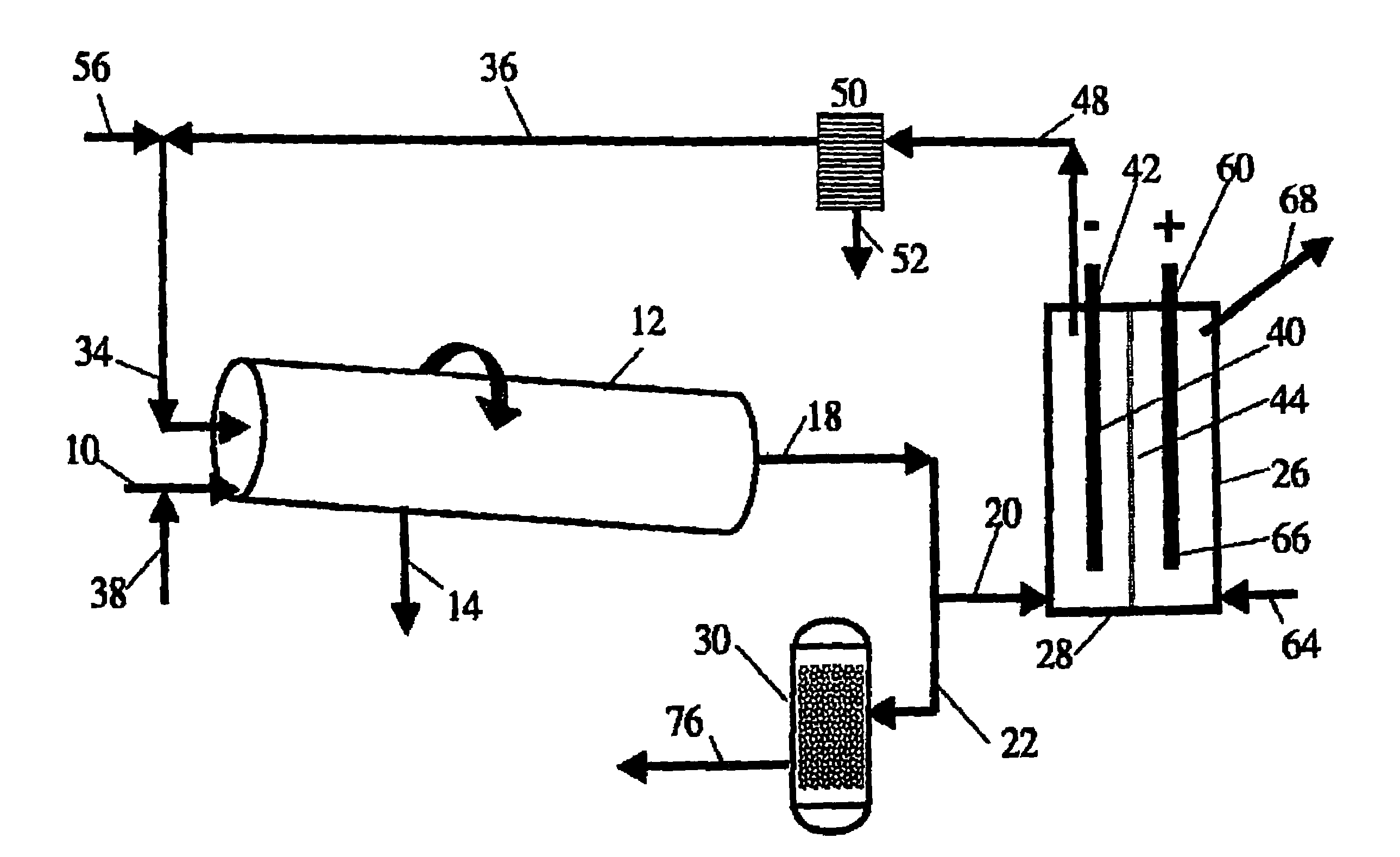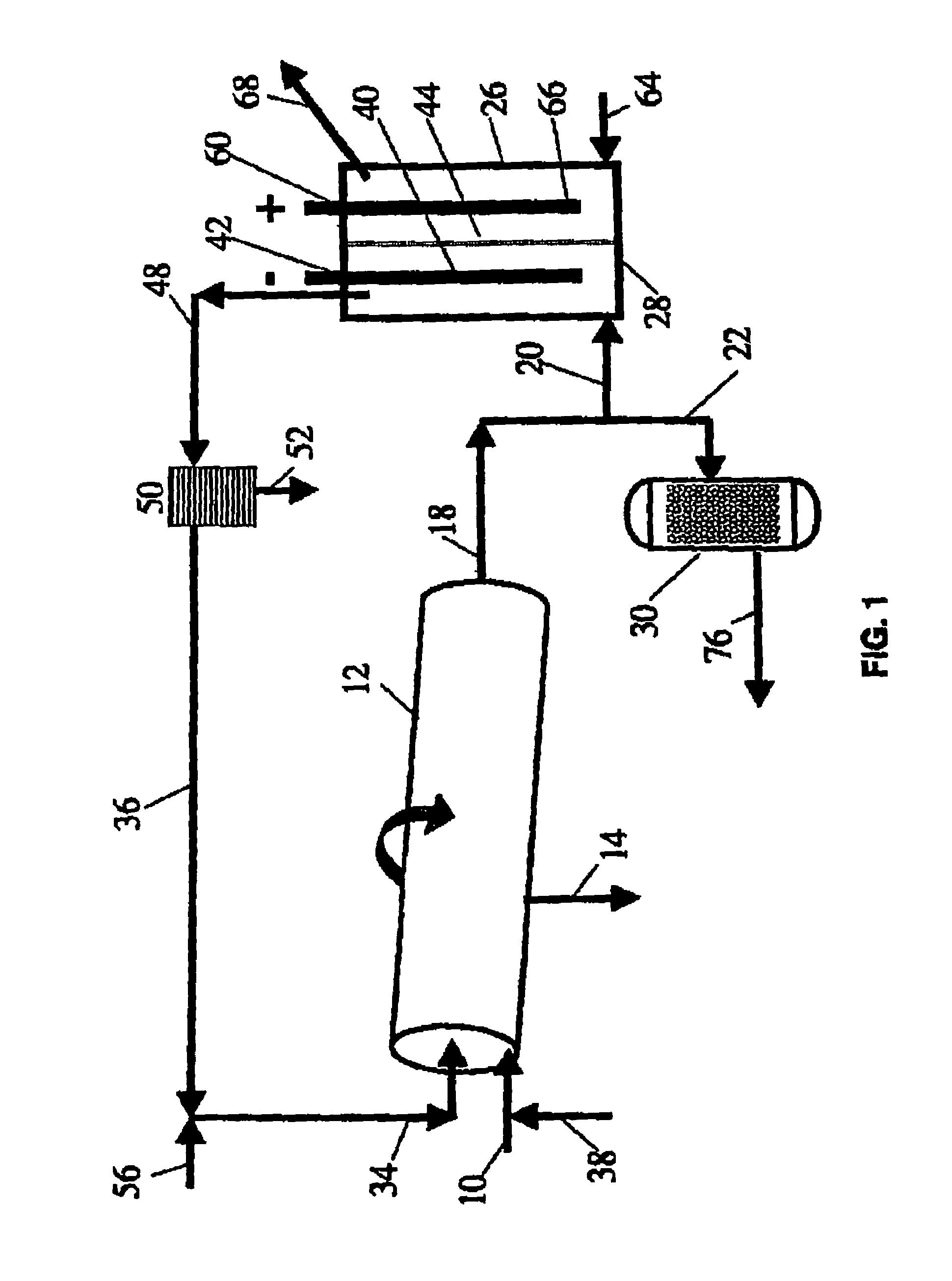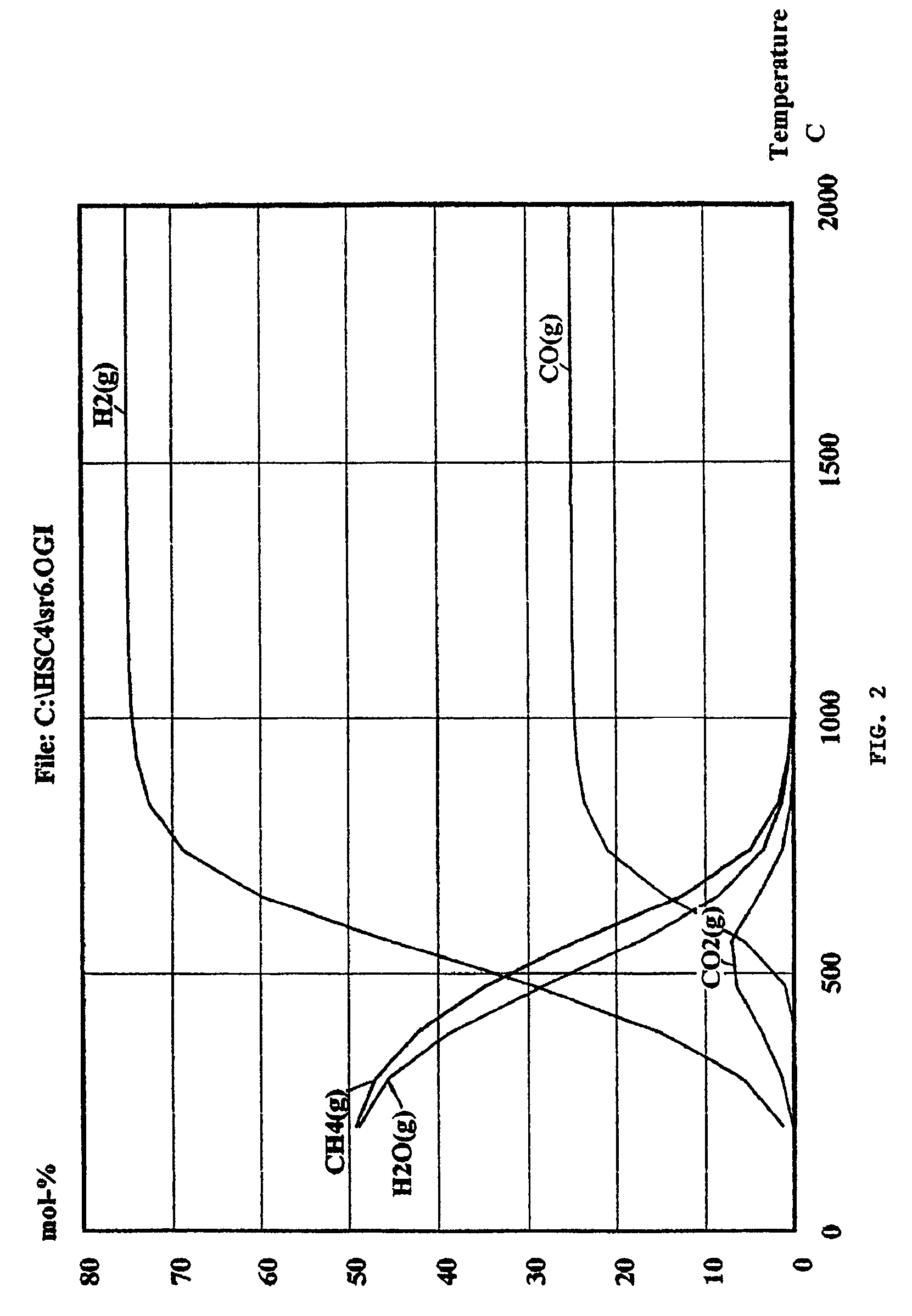Process and system for converting carbonaceous feedstocks into energy without greenhouse gas emissions
- Summary
- Abstract
- Description
- Claims
- Application Information
AI Technical Summary
Benefits of technology
Problems solved by technology
Method used
Image
Examples
Embodiment Construction
[0034]Preferred Embodiment of Process for Hydrogen Fuel Cell Energy Without Production of Unwanted Greenhouse Gases Using a Kiln.
[0035]FIG. 1 illustrates a specific embodiment of the process and system of the present invention in which a carbonaceous waste feed material is passed via inlet line 10 to a non-catalytic high temperature, gas-phase reactor 12 and is converted into synthesis gas at high temperature in the range of about 700° to about 1600° C. (1300-2900° F.). Preferably, a rotary kiln is used as gasifier 12 having outlet 14 to remove the buildup of solids. The syngas produced in gasifier 12 that leaves through outlet line 18 is then split downstream into two flow lines 20 and 22. The syngas in flow line 20 enters fuel cell 26 at port 28. The second syngas stream is passed via flow line 22 to Fischer-Tropsch catalytic reactor 30.
[0036]Preferably gasifier 12 is a slightly inclined horizontal rotary kiln that is heated externally and is called an “indirectly heated rotary ki...
PUM
 Login to View More
Login to View More Abstract
Description
Claims
Application Information
 Login to View More
Login to View More - R&D
- Intellectual Property
- Life Sciences
- Materials
- Tech Scout
- Unparalleled Data Quality
- Higher Quality Content
- 60% Fewer Hallucinations
Browse by: Latest US Patents, China's latest patents, Technical Efficacy Thesaurus, Application Domain, Technology Topic, Popular Technical Reports.
© 2025 PatSnap. All rights reserved.Legal|Privacy policy|Modern Slavery Act Transparency Statement|Sitemap|About US| Contact US: help@patsnap.com



